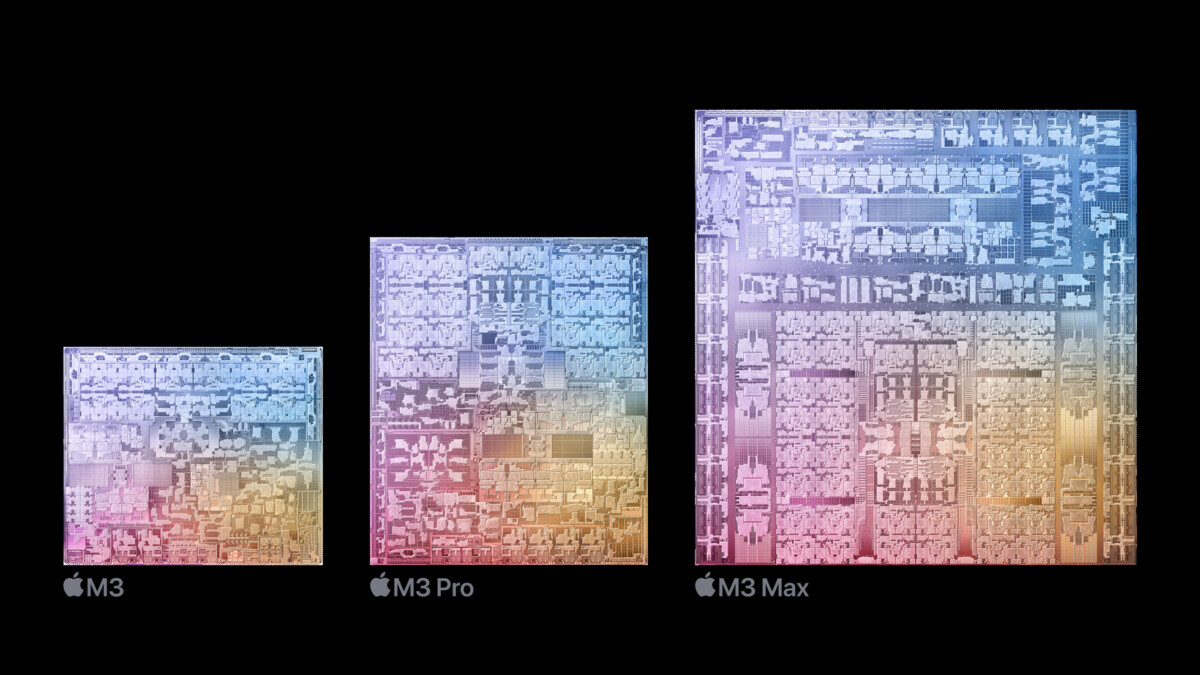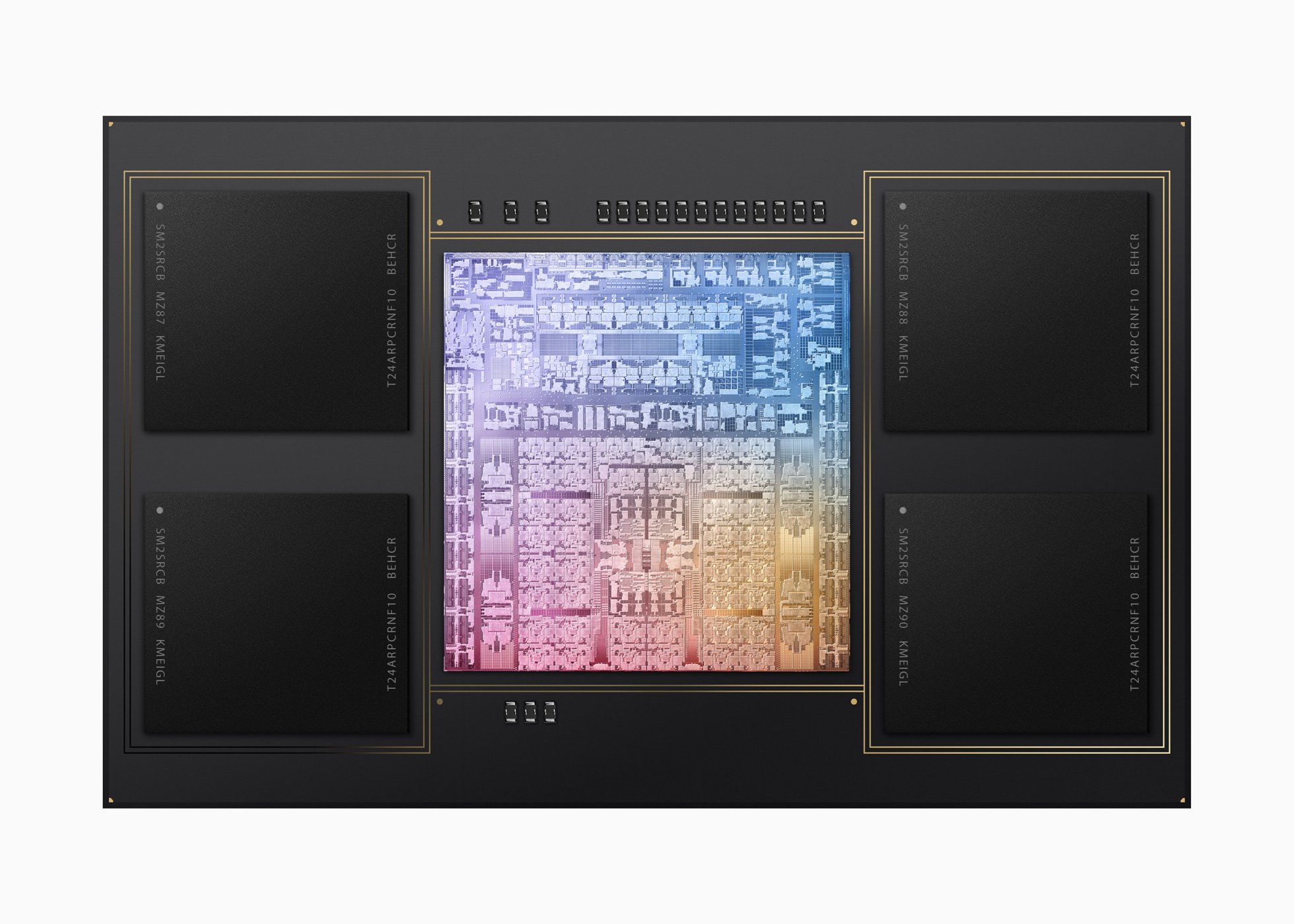Apple has lifted the veil on its new generation of processors, the M3. Highlighting performance and efficiency, these new SoCs are the result of careful design and extensive optimization. We now have a little more information on how they work.
Apple hit hard again at the event Scary Fast by unveiling its new M3, M3 Pro and M3 Max processors, demonstrating its ability to operate at the edge of what is technically possible. During this presentation, the company cleverly used marketing to highlight the impressive performance of these new processors, frequently comparing them to the Apple M1, their predecessor.

As a reminder, we find the M3 SoCs on the new MacBook Pro M3 as well as the iMac M3.
In-depth analysis of the needs of its users and the most used software allowed Apple to design a System on Chip (SoC) highly optimized, minimizing bottlenecks and delivering improved performance.

However, the manufacturer has been transparent about the fact that miracles should not be expected, especially when it comes to the processor cores.
| M3 | M3 | M3 Pro | M3 Pro | M3 Max | M3 Max | |
|---|---|---|---|---|---|---|
| Engraving | TSMC N3B | TSMC N3B | TSMC N3B | TSMC N3B | TSMC N3B | TSMC N3B |
| Transistors | 25 billion | 25 billion | 37 billion | 37 billion | 92 billion | 92 billion |
| CPU cores | 8 (4P + 4E) | 8 (4P + 4E) | 11 (5P + 6E) | 12 (6P + 6E) | 14 (10P + 4E) | 16 (12P + 4E) |
| GPU cores | 8 | 10 | 14 | 18 | 30 | 40 |
| NPU cores | 16 @ 18 Teraops | 16 @ 18 Teraops | 16 @ 18 Teraops | 16 @ 18 Teraops | 16 @ 18 Teraops | 16 @ 18 Teraops |
| Storage Interface | 128 bit | 128 bit | 192 bits | 192 bits | 384 bits | 512 bits |
| Memory bandwidth | 100 GB/s | 100 GB/s | 150 GB/s | 150 GB/s | 300 GB/s | 400 GB/s |
| Storage | LPDDR5-6400 | LPDDR5-6400 | LPDDR5-6400 | LPDDR5-6400 | LPDDR5-6400 | LPDDR5-6400 |
| Maximum unified RAM capacity | 24 GB (2×12) | 24 GB (2×12) | 36 GB (3×12) | 36 GB (3×12) | 96 GB (3×32) | 128 GB (4x 32) |
| Max consumption | Up to 25 watts | Up to 25 watts | Up to 55 watts | Up to 55 watts | Up to 90 watts | Up to 90 watts |
Production of M3 processors relies on TSMC, Apple’s long-time partner, and uses the 3nm manufacturing process. Despite some advances, the N3B node used does not represent a revolution compared to the N5X and N5P nodes, although the latter are now well established. M3 processors nevertheless remain at the cutting edge of technology, with TSMC currently being the only manufacturer capable of offering such an advanced manufacturing node.

Source: High Yield

Source: High Yield

Source: High Yield
High Yield posted online on X / Twitter an annotated version of the image that Apple uses to promote its processors.
Comparison with the competition: a close match
To assess the true power of Apple’s M3 processors, it’s essential to compare them directly with software running natively. By comparing the performances of AMD, Intel and Qualcomm, it appears that Apple’s M3 is positioned very well.
The Snapdragon Based on the performance of the MacBook Pro M2 and the 20% performance increase Apple announced for the M3, the two processors are at a very similar level. This comparison shows that Apple is able to compete, and in some cases even surpass, the performance of processors from other renowned manufacturers.
Tom’s Hardware highlighted this aspect by comparing the M3 chip, which has 25 billion transistors, to other processors on the market. For comparison, AMD’s Ryzen 7 5800H, an APU with eight cores and a fairly capable GPU, has 10.7 billion transistors. The difference is even more striking with Apple’s M3 Max chip and its 92 billion transistors, even surpassing AMD’s EPYC Genoa, equipped with ninety-six cores and counting 90 billion transistors, as well as the GH100 GPU from Nvidia and its 80 billion transistors.
Although these comparisons may seem unfavorable to Apple at first, it is crucial to understand the reasons why competitors are integrating fewer transistors into their chips. First, Apple’s products are systems on a chip, integrating all the necessary components. Unlike AMD’s Ryzen 7 5800H APU, which while technically a system-on-a-chip, is typically paired with a chipset to handle the input/output needed for a modern computer. Additionally, Apple’s M3 Max chip integrates both a GPU and a CPU, as well as other components, while competing products typically focus on just one of these tasks.
Second, Apple’s chips stand out for integrating a significant amount of cache memory, especially in the SLC area, outperforming the majority of competing chips. This additional cache memory helps speed up data access and improve overall system performance.
Finally, as explained above, the 3nm engraving used for the manufacturing of M3 chips allows Apple to integrate a significantly higher number of transistors than its competitors, thus offering exceptional power and energy efficiency.
